1. Early Life
Princess Beatrice's birth, family background, childhood environment, and education laid the foundation for her unique role within the royal family.
1.1. Childhood and Education
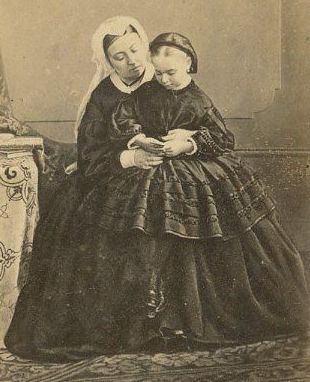
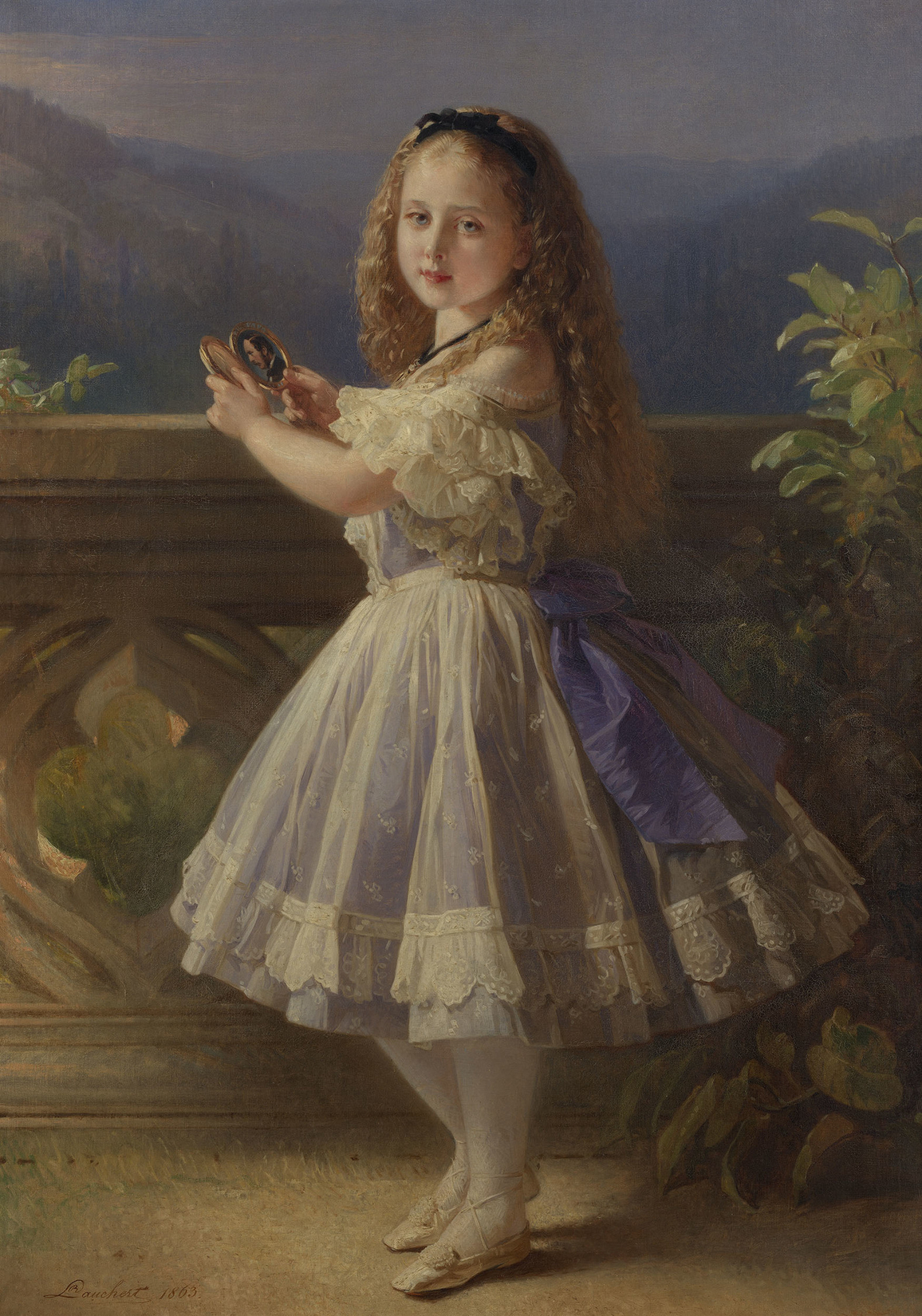
Princess Beatrice was born on 14 April 1857 at Buckingham Palace in London. She was the fifth daughter and the youngest of the nine children of the reigning British monarch, Queen Victoria, and her husband, Prince Albert of Saxe-Coburg and Gotha. Her birth generated public discussion because Queen Victoria opted to use chloroform for pain relief during delivery, administered by Dr John Snow. This practice was considered dangerous for both mother and child and was generally disapproved of by the Church of England and medical authorities at the time. Despite these concerns, Queen Victoria remained resolute, referring to it as "that blessed chloroform" for her final pregnancy. Two weeks later, she recorded in her journal, "I was amply rewarded and forgot all I had gone through when I heard dearest Albert say 'It's a fine child, and a girl!'"
Albert and Queen Victoria chose the names Beatrice Mary Victoria Feodore. Mary was chosen after Princess Mary, Duchess of Gloucester, who was the last surviving child of King George III of the United Kingdom. Victoria honored the Queen herself, and Feodore was in tribute to Feodora, Princess of Hohenlohe-Langenburg, the Queen's older half-sister. Beatrice was baptized in the private chapel at Buckingham Palace on 16 June 1857. Her godparents were her maternal grandmother, the Duchess of Kent; her eldest sister, the Princess Royal; and her future brother-in-law, Prince Frederick of Prussia.
From birth, Beatrice quickly became a favored child, especially as the elder favorite daughter of Prince Albert, the Princess Royal, was preparing to move to Germany with her new husband, Frederick of Prussia. Prince Albert observed Beatrice's promise, writing to Augusta, Frederick's mother, that "Baby practises her scales like a good prima donna before a performance and has a good voice!" Although Queen Victoria was generally known to dislike most babies, she was fond of Beatrice, whom she found attractive. This affection gave Beatrice an advantage over her elder siblings. Queen Victoria once described Beatrice as "a pretty, plump and flourishing child... with fine large blue eyes, [a] pretty little mouth and very fine skin." Her long, golden hair was a frequent subject of paintings commissioned by Queen Victoria, who notably enjoyed bathing Beatrice herself, a stark contrast to her preferences for her other children. Beatrice demonstrated early intelligence, further endearing her to the Prince Consort, who was amused by her childhood precociousness. He wrote to Baron Stockmar that Beatrice was "the most amusing baby we have had." Despite sharing the rigorous education program designed by Prince Albert and Baron Stockmar, Beatrice experienced a more relaxed infancy dueys to her close relationship with her parents. By the age of four, as the youngest and acknowledged last royal child, Beatrice was not compelled to share her parents' attention in the same way her siblings had been, and her amusing nature provided comfort to her ailing father.
2. Devotion to Queen Victoria
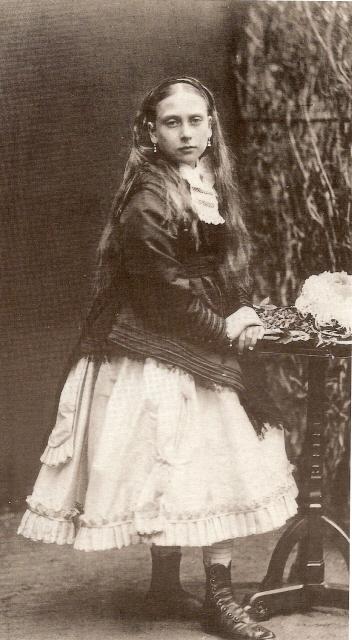
Princess Beatrice lived a life marked by profound devotion to her mother, Queen Victoria, especially after the death of Prince Albert, taking on the crucial role of the Queen's secretary and constant companion.
In March 1861, Queen Victoria's mother, Victoria, Duchess of Kent, died at Frogmore. The Queen was overwhelmed with grief and guilt over their estrangement at the beginning of her reign. Beatrice, then a young child, attempted to console her mother by reminding her that the Duchess of Kent was "in heaven, but Beatrice hopes she will return." This comfort was particularly significant because Queen Victoria had largely isolated herself from her children, with the notable exceptions of her eldest unmarried daughter, Princess Alice, and Beatrice. Queen Victoria's reliance on Beatrice and Alice intensified after the death of Prince Albert from typhoid fever on 14 December 1861.
The depth of the Queen's grief following her husband's death astonished her family, courtiers, politicians, and the general public. Similar to her reaction upon her mother's death, she withdrew from most of her family, especially the Prince of Wales, whom she blamed for her husband's demise. Again, only Alice and Beatrice remained close. Queen Victoria frequently took Beatrice from her cot, hurried to her own bed, and would "lay there sleepless, clasping to her child, wrapped in the nightclothes of a man who would wear them no more."
After 1871, when the last of Beatrice's elder sisters-Victoria, Princess Royal (married in 1858), Alice (married in 1862), Helena (married in 1866), and Louise (married in 1871)-had married, Queen Victoria came to depend solely upon her youngest daughter. From an early age, Beatrice had declared her intention to stay with her mother, stating, "I don't like weddings at all. I shall never be married. I shall stay with my mother." As her mother's secretary, Beatrice performed various duties, including writing on the Queen's behalf and assisting with political correspondence. These duties were similar to those successively carried out by her sisters, Alice, Helena, and Louise. However, the Queen soon added more personal tasks. During a serious illness in 1871, the Queen dictated her journal entries to Beatrice, and in 1876, she allowed Beatrice to organize the music she and the Prince Consort had played, which had remained untouched since his death fifteen years prior.
The profound devotion Beatrice showed to her mother was frequently acknowledged in the Queen's letters and journals, and the Queen's constant need for Beatrice grew even stronger. For instance, after a failed assassination attempt on the Queen in 1882, Victoria praised Beatrice's "courage and calmness, for she saw the whole thing, the man take aim, and fire straight into the carriage, but she never said a word, observing that I was not frightened." The Queen experienced another significant loss in 1883 with the death of her highland servant, John Brown, at Balmoral Castle. Once again, Queen Victoria entered a period of public mourning and leaned heavily on Beatrice for support. Unlike her siblings, Beatrice had never shown any dislike for Brown, and the two were often seen together, working collaboratively to fulfill the Queen's wishes.
3. Marriage and Family
Princess Beatrice's path to marriage was unique among her siblings, marked by Queen Victoria's possessiveness, but eventually led to a family life with Prince Henry of Battenberg and their four children.
3.1. Life and Suitors Before Marriage
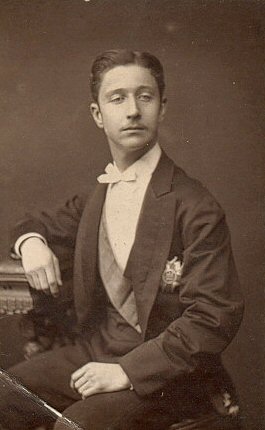
Although Queen Victoria was determined to keep Beatrice at home and was initially set against her marrying anyone, a number of potential suitors were proposed before Beatrice's eventual marriage to Prince Henry of Battenberg. One prominent candidate was Napoléon Eugéne, the French Prince Imperial, who was the son and heir of the exiled Emperor Napoleon III of France and his wife, Empress Eugénie. After Prussia defeated France in the Franco-Prussian War, Napoleon III was deposed, and his family moved to England in 1870. Following the Emperor's death in 1873, Queen Victoria and Empress Eugénie formed a close bond, leading newspapers to report on the imminent engagement of Beatrice to the Prince Imperial. These rumors, however, ceased with the Prince Imperial's death in the Anglo-Zulu War on 1 June 1879. Queen Victoria's journal vividly records their shared grief: "Dear Beatrice, crying very much as I did too, gave me the telegram... It was dawning and little sleep did I get... Beatrice is so distressed; everyone quite stunned."
After the death of the Prince Imperial, the Prince of Wales suggested that Beatrice marry their sister Alice's widower, Louis IV, Grand Duke of Hesse. Alice had died in 1878, and the Prince argued that Beatrice could serve as a surrogate mother for Louis's young children while spending most of her time in England to care for their mother. He further proposed that the Queen could more easily oversee the upbringing of her Hessian grandchildren under this arrangement. However, at the time, it was legally forbidden for Beatrice to marry her sister's widower. The Prince of Wales strongly advocated for the passage of the Deceased Wife's Sister Bill by the Houses of Parliament, which would have removed this legal impediment. Despite considerable popular support for this measure, and its passage in the House of Commons, it was ultimately rejected by the House of Lords due to opposition from the Lords Spiritual. Although Queen Victoria was disappointed by the bill's failure, she was content to keep her daughter by her side.
Other potential partners, including two of Prince Henry's brothers, Prince Alexander ("Sandro") and Prince Louis of Battenberg, were also put forth as husbands for Beatrice but were unsuccessful. While Alexander never formally pursued Beatrice, merely stating he "might even at one time have become engaged to the friend of my childhood, Beatrice of England," Louis was more genuinely interested. Queen Victoria invited Louis to dinner but deliberately sat between him and Beatrice, having instructed Beatrice to ignore Louis to discourage his advances. Louis, unaware of the Queen's motivations for several years, eventually married Beatrice's niece, Princess Victoria of Hesse and by Rhine. Although her hopes for marriage had faced another setback, it was while attending Louis's wedding in Darmstadt that Beatrice met and fell in love with Prince Henry, who reciprocated her affections.
3.2. Marriage to Prince Henry
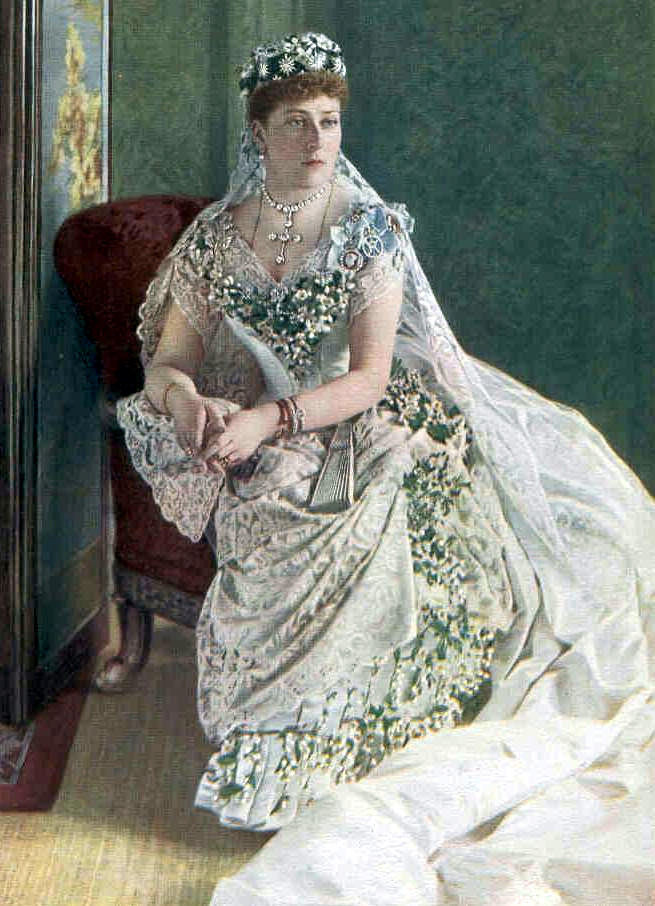
Upon her return from Darmstadt, when Beatrice informed her mother of her intention to marry, the Queen reacted with an unsettling silence. Although they remained physically close, Queen Victoria did not speak to Beatrice for seven months, communicating solely through written notes. The Queen's behavior, which even her family found unexpected, appeared to be driven by the looming threat of losing her devoted daughter. Queen Victoria regarded Beatrice as her "Baby" - her innocent child - and seemed to view the physical aspect of marriage as an end to this cherished innocence.
Subtle persuasion from the Princess of Wales and the Crown Princess of Prussia, who reminded the Queen of the happiness Beatrice had brought to the Prince Consort, eventually prompted Queen Victoria to resume speaking to her youngest daughter. Queen Victoria finally consented to the marriage on the condition that Prince Henry would abandon his German commitments and reside permanently with Beatrice and the Queen in England.
Beatrice and Henry were married at St Mildred's Church, Whippingham on the Isle of Wight, near Osborne House, on 23 July 1885. Beatrice, adorned in her mother's wedding veil of Honiton lace, was escorted by Queen Victoria and her eldest brother, the Prince of Wales. Princess Beatrice was attended by ten royal bridesmaids, all her nieces, including Princesses Louise, Victoria, and Maud of Wales; Princesses Irene and Alix of Hesse and by Rhine; Princesses Marie, Victoria Melita, and Alexandra of Edinburgh; and Princesses Helena Victoria and Marie Louise of Schleswig-Holstein. The bridegroom's supporters were his brothers, Prince Alexander of Bulgaria and Prince Francis Joseph of Battenberg. Notably absent from the ceremony were Beatrice's eldest sister and brother-in-law, the Crown Prince and Princess of Prussia, who were unable to leave Germany; William Ewart Gladstone; and Beatrice's cousin, Princess Mary Adelaide, Duchess of Teck, who was in mourning for her father-in-law. The ceremony concluded with the couple's departure for their honeymoon at Quarr Abbey House, located a few miles from Osborne. Queen Victoria, bidding them farewell, later admitted to the Crown Princess that she "bore up bravely till the departure and then fairly gave way."
3.3. Children
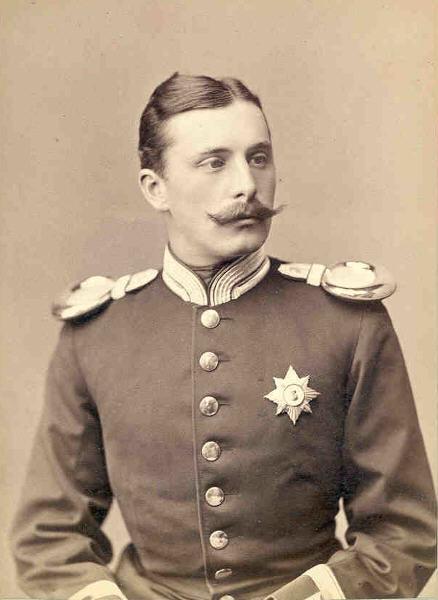
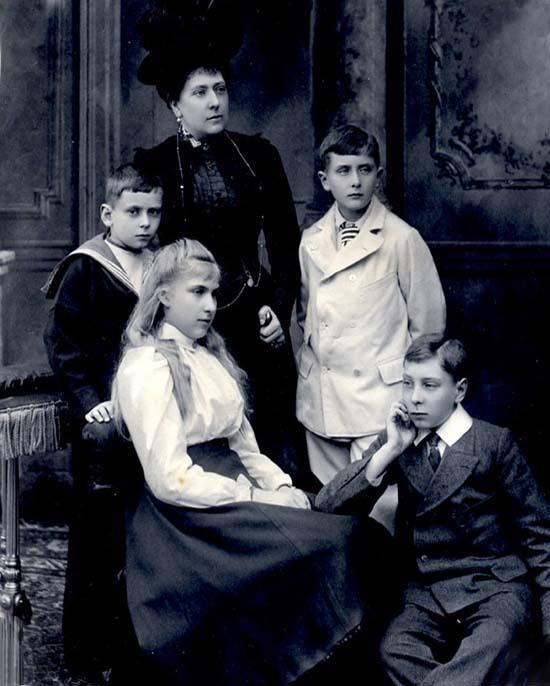
After a brief honeymoon, Beatrice and her husband fulfilled their promise and returned to the Queen's side. Queen Victoria made it unequivocally clear that she could not manage alone and that the couple was not permitted to travel without her. Although the Queen relaxed this restriction shortly after the marriage, Beatrice and Henry's travels were limited to short visits with his family. Beatrice's love for Henry, much like the Queen's affection for the Prince Consort, appeared to deepen with each year of their marriage. When Henry traveled without Beatrice, she visibly brightened upon his return.
The inclusion of Prince Henry into the royal family brought new reasons for Beatrice and the Queen to look forward, and the court regained a vibrancy that had been absent since the Prince Consort's death. Nevertheless, Henry, with Beatrice's support, was determined to participate in military campaigns, a desire that displeased the Queen, who opposed his involvement in life-threatening warfare. Conflicts also arose when Henry attended the Ajaccio carnival and kept "low company," prompting Beatrice to dispatch a Royal Navy officer to remove him from temptation. On one occasion, Henry secretly left for Corsica with his brother Louis, resulting in the Queen sending a warship to retrieve him. Henry felt increasingly constrained by the Queen's constant need for his and his wife's company.
Despite her marriage, Beatrice remained loyal to her promise to the Queen, continuing as her full-time confidante and secretary. Queen Victoria, in turn, developed a fondness for Henry. However, the Queen criticized Beatrice's conduct during her first pregnancy. When Beatrice ceased attending the Queen's dinners a week before giving birth, preferring to eat alone in her room, the Queen angrily wrote to her physician, Dr. James Reid, stating, "I [urged the Princess to continue] coming to dinner, and not simply moping in her own room, which is very bad for her. In my case I regularly came to dinner, except when I was really unwell (even when suffering a great deal) up to the very last day." A week later, with the aid of chloroform, Beatrice gave birth to her first son, Alexander.
Despite suffering a miscarriage in the early months of her marriage, Beatrice gave birth to four children:
| Portrait | Name | Birth | Death | Notes |
|---|---|---|---|---|
 | Prince Alexander of Battenberg later Alexander Mountbatten, 1st Marquess of Carisbrooke | 23 November 1886 | 23 February 1960 | Married Lady Irene Denison (4 July 1890 - 16 July 1956) on 19 July 1917. One daughter (Lady Iris Mountbatten, 1920-1982). |
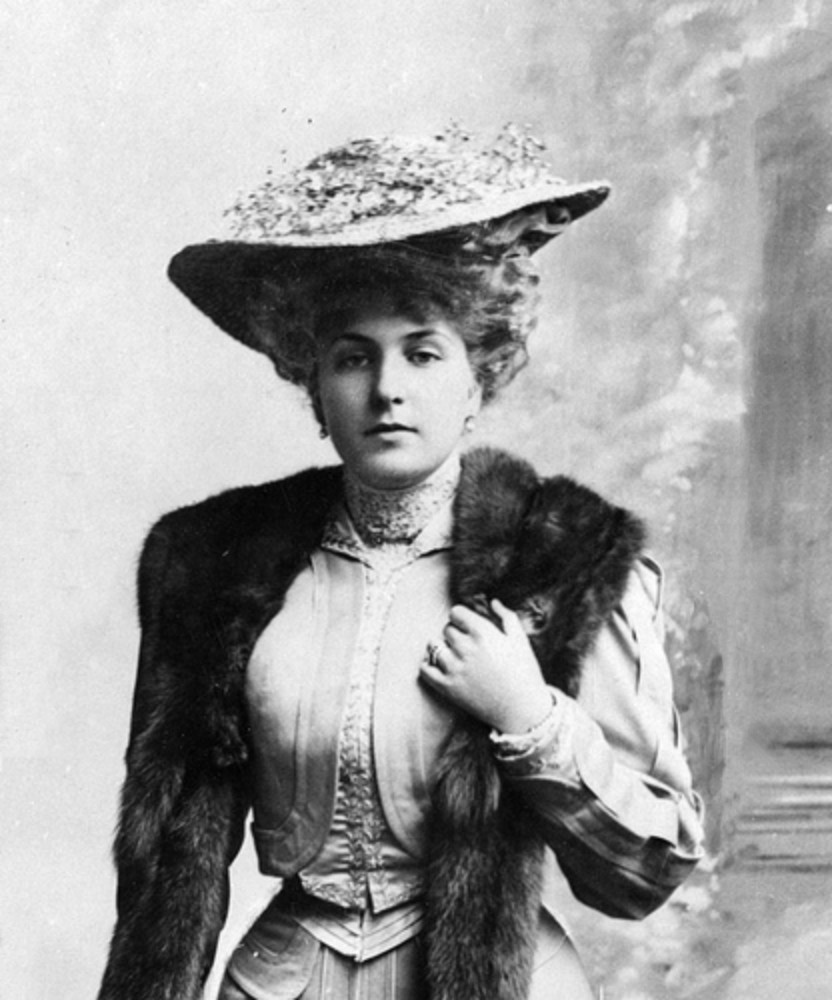 | Princess Victoria Eugénie of Battenberg later Queen of Spain | 24 October 1887 | 15 April 1969 | Married Alfonso XIII of Spain (17 May 1886 - 28 February 1941) on 31 May 1906. Two daughters, five sons (one stillborn), (including Infante Juan, Count of Barcelona, 1913-1993, father of Juan Carlos I of Spain). |
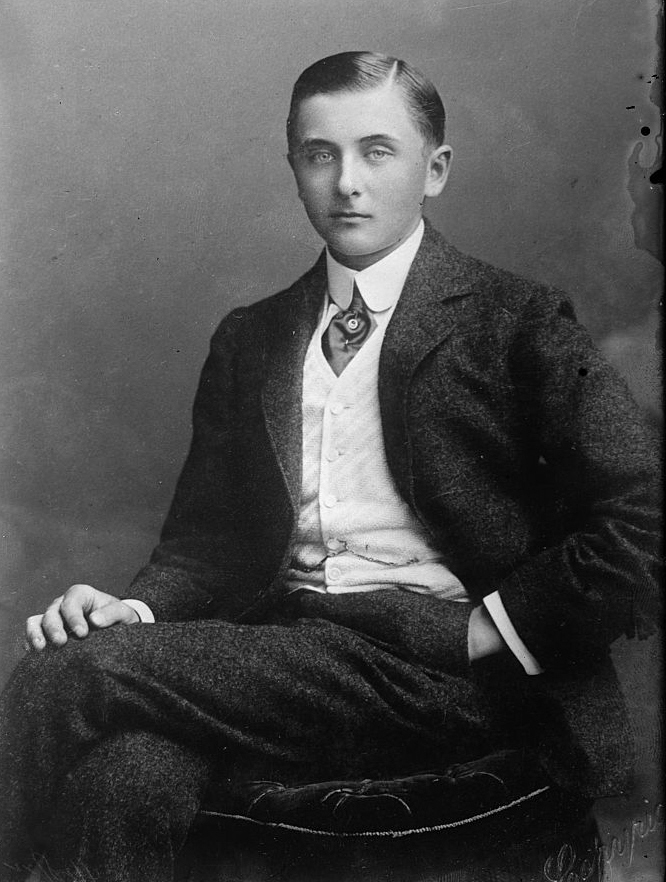 | Prince Leopold of Battenberg later Lord Leopold Mountbatten | 21 May 1889 | 23 April 1922 | Suffered from haemophilia; died unmarried and without issue during a knee operation. |
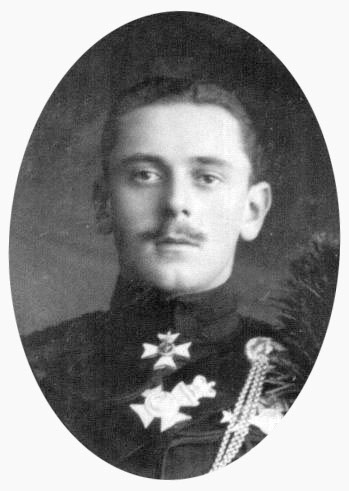 | Prince Maurice of Battenberg | 3 October 1891 | 27 October 1914 | Died of wounds from action during First World War. |
Following the births of her children, Beatrice developed a polite and encouraging interest in social issues. While court entertainments were few after the Prince Consort's death, Beatrice and the Queen enjoyed tableau vivant photography, which was often performed at the royal residences. Henry, increasingly bored by the lack of activity at court, longed for employment. In response, the Queen appointed him Governor of the Isle of Wight in 1889. However, he continued to yearn for military adventure and pleaded with his mother-in-law to allow him to join the Ashanti expedition fighting in the Anglo-Asante War. Despite her misgivings, the Queen consented. Henry and Beatrice parted on 6 December 1895, never to meet again. Henry contracted malaria and was sent home, but on 22 January 1896, Beatrice, who was awaiting her husband at Madeira, received a telegram informing her of Henry's death two days earlier.
Devastated by her loss, Beatrice withdrew from court for a month of mourning before returning to her post by her mother's side. The Queen's journal records that Victoria "[w]ent over to Beatrice's room and sat a while with her. She is so piteous in her misery." Despite her profound grief, Beatrice remained her mother's faithful companion. As Queen Victoria aged, she relied more heavily on Beatrice for handling correspondence. Recognizing Beatrice's need for her own space, the Queen granted her the Kensington Palace apartments once occupied by the Queen and her mother. Victoria also appointed Beatrice to the governorship of the Isle of Wight, a position vacated by Prince Henry's death. In response to Beatrice's interest in photography, the Queen had a darkroom installed at Osborne House. The significant changes in the family dynamics, including Beatrice's absorption in caring for her mother, may have impacted her children, who exhibited rebellious behavior at school. Beatrice noted that Ena was "troublesome and rebellious," and Alexander was telling "unwarrantable untruths."
4. Later Life and Queen Victoria's Journals
After Queen Victoria's death, Princess Beatrice's public role shifted, and she undertook the monumental task of editing her mother's journals, alongside navigating her own family's challenges and changes during and after World War I.
4.1. Editing Queen Victoria's Journals
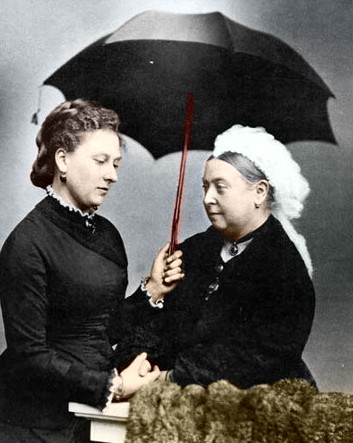
Beatrice's life was profoundly changed by the death of Queen Victoria on 22 January 1901. She wrote to the Principal of the University of Glasgow in March, "...you may imagine what the grief is. I, who had hardly ever been separated from my dear mother, can hardly realise what life will be like without her, who was the centre of everything." Beatrice continued to make public appearances, but her position at court diminished. Unlike her sister Louise, she was not close to her brother, who was now Edward VII, and was not included in the King's inner circle. Although their relationship did not completely break down, it was occasionally strained, for instance, when she accidentally (but noisily) dropped her service book from the royal gallery onto a table of gold plate during his coronation.
After inheriting Osborne House, the King ordered his mother's personal photographs and belongings to be removed and some of them destroyed, particularly material relating to John Brown, whom he intensely disliked. Queen Victoria had intended Osborne to be a private, secluded residence for her descendants, away from the pomp and ceremony of mainland life. However, the new king had no personal need for the house and consulted his lawyers about its disposal, planning to transform the main wing into a convalescent home, open the state apartments to the public, and construct a Naval College on the grounds. These plans met with strong disapproval from Beatrice and Louise. Queen Victoria had bequeathed them houses on the estate, and the privacy promised to them by their mother was now threatened. When Edward discussed the fate of the house with them, Beatrice strongly argued against allowing the house to leave the family, emphasizing its importance to their parents.
However, the King did not wish to keep the house himself and offered it to his heir-apparent, Beatrice's nephew George, who declined, citing the high cost of maintenance. Edward subsequently extended the grounds of Beatrice's home, Osborne Cottage, to compensate her for the impending loss of her privacy. Shortly thereafter, the King declared to Arthur Balfour, the prime minister, that the main house would be given to the nation as a gift. An exception was made for the private apartments, which remained closed to all but royal family members, who transformed them into a shrine in memory of their mother.
Upon Queen Victoria's death, Beatrice embarked on the momentous task of transcribing and editing her mother's journals. The hundreds of volumes, dating from 1831 onwards, contained the Queen's personal views on her daily life, encompassing personal and family matters as well as affairs of state. Queen Victoria had specifically entrusted Beatrice with the responsibility of editing the journals for publication, which involved removing private material and passages that, if published, might cause distress or harm to living individuals. Beatrice diligently deleted such extensive material that the edited journals ultimately amounted to only one-third of the length of the originals. The destruction of such large portions of Queen Victoria's original diaries caused distress to Beatrice's nephew, George V, and his wife, Queen Mary, who were powerless to intervene. Beatrice meticulously copied a draft from the original journals and then transcribed her draft into a set of blue notebooks. Both the original volumes and her initial drafts were systematically destroyed as she progressed through the task. This monumental undertaking consumed thirty years of her life, finally being completed in 1931. The 111 surviving notebooks are now preserved in the Royal Archives at Windsor Castle.
5. Public Life and Retirement

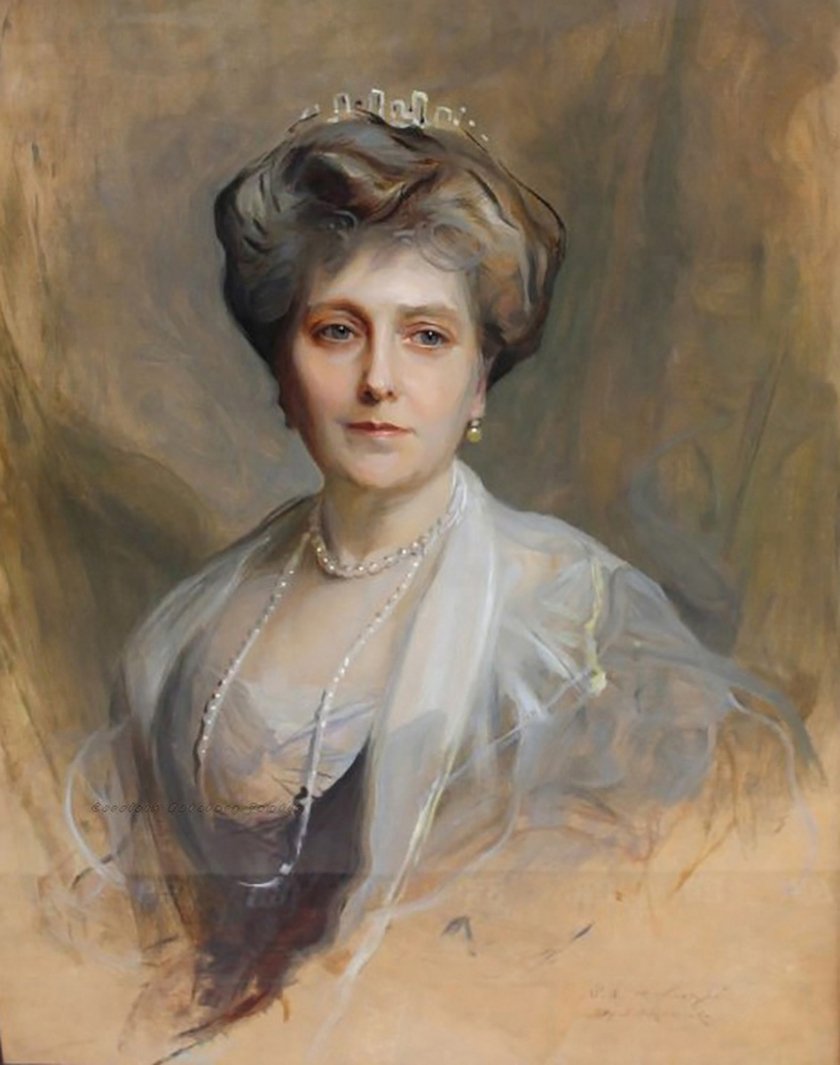
Beatrice continued to appear in public after her mother's death. The public engagements she carried out were frequently associated with her mother, Queen Victoria, as the public had always linked Beatrice closely with the deceased monarch.
The beauty of Beatrice's daughter, Ena, was renowned across Europe, and despite her relatively low rank, she was considered a desirable bride. Her chosen suitor was Alfonso XIII of Spain. However, this marriage sparked controversy in Britain, as it necessitated Ena's conversion to Catholicism. This step was opposed by Beatrice's brother, Edward VII. In Spain, ultra-conservatives also opposed the King's marriage to a Protestant of comparatively low birth, given that Ena's father, Prince Henry, was the son of a morganatic marriage. Consequently, they regarded Ena as only partly royal and thus unsuitable to be Queen of Spain. Nevertheless, the couple married on 31 May 1906. The marriage began inauspiciously when an anarchist attempted a bomb attack on their wedding day. Initially appearing close, the couple gradually drifted apart. Ena became unpopular in Spain, and her standing further deteriorated when it was discovered that her son, the heir-apparent to the throne, suffered from haemophilia. Alfonso held Beatrice responsible for introducing the disease into the Spanish royal house and consequently turned bitterly against Ena.
During her time as Queen of Spain, Ena returned many times to visit her mother in Britain, though always without Alfonso and usually without her children. Meanwhile, Beatrice resided at Osborne Cottage in East Cowes until she sold it in 1913, when Carisbrooke Castle, the official residence of the Governor of the Isle of Wight, became vacant. She moved into the Castle while retaining an apartment at Kensington Palace in London. She had been significantly involved in collecting material for the Carisbrooke Castle museum, which she herself opened in 1898.
Her presence at court gradually diminished as she aged. Devastated by the death of her favorite son, Maurice, during the First World War in 1914, she began to withdraw from public life. In response to the war with Germany, George V changed the name of the royal house from Saxe-Coburg and Gotha to Windsor and simultaneously adopted it as the family surname, aiming to downplay their German origins. Subsequently, Beatrice and her family renounced their German titles; Beatrice stopped using the style Princess Henry of Battenberg, reverting to her birth style, HRH The Princess Beatrice. Her sons relinquished their style, Prince of Battenberg. Alexander, the eldest, became Sir Alexander Mountbatten and was later granted the title Marquess of Carisbrooke in the Peerage of the United Kingdom. Her younger son, Leopold, became Lord Leopold Mountbatten and was accorded the rank of a younger son of a marquess. He was a haemophiliac, having inherited the "royal disease" from his mother, and died during a knee operation in 1922, one month shy of his 33rd birthday.
Following the war, Beatrice became a patron of The Ypres League, a society established for veterans of the Ypres Salient and bereaved relatives of those killed in fighting there. She herself was a bereaved mother, as her son, Prince Maurice of Battenberg, had been killed in action during the First Battle of Ypres. Her rare public appearances after his death included commemorations, such as laying wreaths at the Cenotaph in 1930 and 1935 to mark the 10th and 15th anniversaries of the League's founding.
6. Death
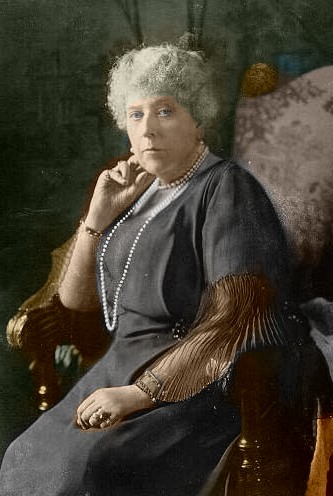
Even in her seventies, Princess Beatrice continued to correspond with friends and relatives and made occasional public appearances, such as in 1936 when, pushed in a wheelchair, she viewed the wreaths laid after the death of her nephew George V. She published her final translation work in 1941, titled "In Napoleonic Days," which comprised the personal diary of Queen Victoria's maternal grandmother, Augusta, Duchess of Saxe-Coburg-Saalfeld. She maintained correspondence with her publisher, John Murray, who greatly approved of the work.
Her last home was at Brantridge Park in West Sussex, which was owned by Alexander Cambridge, 1st Earl of Athlone, Queen Mary's brother, and his wife, Princess Alice, who was Beatrice's niece. The Athlones were in Canada at the time, where the Earl served as governor-general. Princess Beatrice died in her sleep at Brantridge Park on 26 October 1944, at the age of eighty-seven. This was notably the day before the 30th anniversary of her son Prince Maurice's death.
After her funeral service in St George's Chapel, Windsor Castle, her coffin was temporarily placed in the royal vault on 3 November. On 27 August 1945, her body was transferred and interred in a joint tomb alongside her husband, Prince Henry, in St Mildred's Church, Whippingham. Beatrice's final wish, to be buried with her husband on the island most familiar to her, was fulfilled in a private service at Whippingham attended only by her son, the Marquess of Carisbrooke, and his wife.
7. Legacy and Assessment
Princess Beatrice's life is historically assessed for her personality, talents, devoted role within the royal family, and the profound impact of inherited conditions on her descendants.
7.1. Positive Assessment
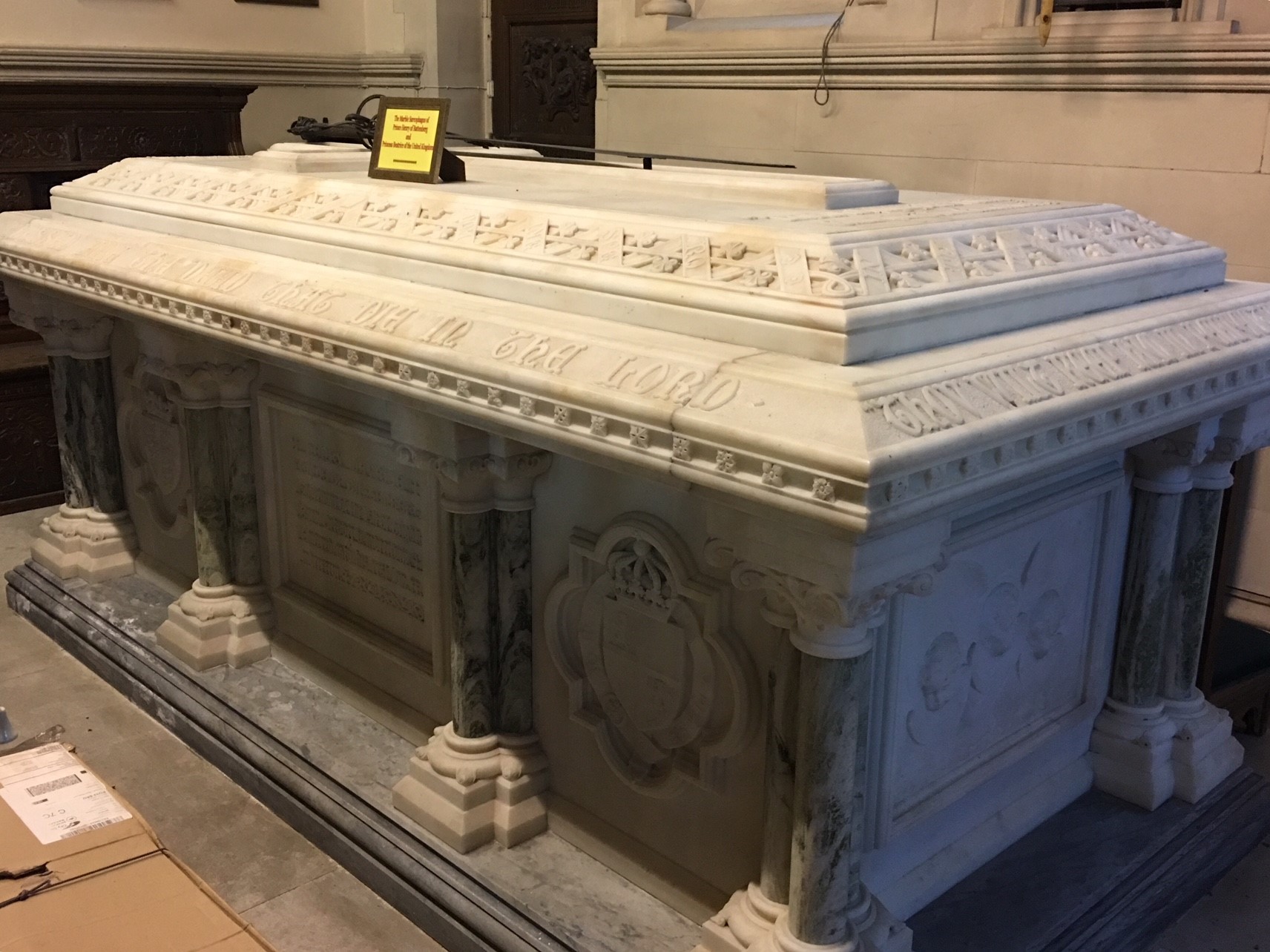
Beatrice was considered the shyest of all Queen Victoria's children. However, because she accompanied Queen Victoria almost everywhere, she became one of the best-known members of the royal family. Despite her shyness, she was a talented actress and dancer, as well as a keen artist and photographer. She was deeply devoted to her children and expressed concern when they misbehaved at school. To those who shared her friendship, she was loyal and possessed a strong sense of humor. As a public figure, she was driven by a powerful sense of duty. She served as Patron of the Isle of Wight Branch of the Royal National Lifeboat Institution from 1920 until her death. Music, a passion shared by her mother and the Prince Consort, was an area in which Beatrice excelled. She played the piano to professional standards and was an occasional composer. Like her mother, she was a devout Christian, remaining fascinated by theology until her death. With her calm temperament and personal warmth, the princess earned widespread approval from the public.
Her considerable effort and unwavering dedication did not go unnoticed by the British public. In 1886, when she agreed to open the Show of the Royal Horticultural Society of Southampton, the organizers sent her a proclamation of thanks, expressing their "admiration of the affectionate manner in which you have comforted and assisted your widowed mother our Gracious Sovereign the Queen." As a wedding present, Sir Moses Montefiore, a renowned banker and philanthropist, presented Beatrice and Henry with a silver tea service inscribed with the biblical verse: "Many daughters have acted virtuously, but thou excellest them all."
7.2. Criticism and Controversy
The demands placed on Beatrice during her mother's reign were exceptionally high. Despite suffering from rheumatism, Beatrice was compelled to endure her mother's preference for cold weather, which exacerbated her condition. Her piano playing, an enjoyment in which she excelled, suffered as her rheumatism progressively worsened; however, this did not diminish her willingness to cater to her mother's needs.
The The Times newspaper, shortly before Beatrice's marriage, published a sentence that, while seemingly complimentary, contained an implicit criticism of the Queen's control over her daughter: "The devotion of your Royal Highness to our beloved Sovereign has won our warmest admiration and our deepest gratitude. May those blessings which it has hitherto been your constant aim to confer on others now be returned in full measure to yourself." This veiled statement suggested a public awareness of the sacrifices Beatrice made due to the Queen's possessiveness.
A significant controversy arose from the inheritance of haemophilia, which she carried from her mother, Queen Victoria. This condition tragically affected her sons Leopold and Maurice, the latter dying from wounds in World War I, and was passed on to her daughter Victoria Eugenie, who then transmitted it to the Spanish royal family. Alfonso XIII of Spain, her son-in-law, openly blamed Beatrice for introducing haemophilia into the Spanish royal house, leading to severe strain and bitterness in his relationship with Ena. This highlights the profound personal and dynastic consequences of the genetic condition within her lineage.
8. Titles, Styles, Honours, and Arms
Princess Beatrice held various titles and styles throughout her life, was bestowed with numerous British and foreign honors, and her coat of arms reflected her royal status and lineage.
8.1. Titles and Styles
- 14 April 1857 - 23 July 1885: Her Royal Highness The Princess Beatrice
- 23 July 1885 - 14 July 1917: Her Royal Highness The Princess Beatrice, Princess Henry of Battenberg
- 17 July 1917 - 26 October 1944: Her Royal Highness The Princess Beatrice
8.2. Honours
;British honours
- 1 January 1878: Order of the Crown of India
- 8 January 1919: Dame Grand Cross of the British Empire
- 12 June 1926: Dame Grand Cross of St John
- 11 May 1937: Dame Grand Cross of the Royal Victorian Order
- Royal Order of Victoria and Albert
- Royal Red Cross
;Foreign honours
- Russian Empire: Grand Cross of St. Catherine
- Kingdom of Portugal: 11 September 1875: Dame of the Order of Queen Saint Isabel
- Grand Duchy of Hesse: 25 April 1885: Dame of the Golden Lion
- Spain: 27 May 1889: Dame of the Order of Queen Maria Luisa
8.3. Arms
In 1858, Princess Beatrice and her three younger sisters were granted the right to use the royal arms, which included an inescutcheon featuring the shield of Saxony. Their arms were further distinguished by a label of three points argent. Specifically, on Beatrice's arms, the outer points bore roses gules, while the center point featured a heart gules. However, in 1917, the inescutcheon was removed by a royal warrant issued by George V, reflecting the broader shift away from German ties during World War I.


9. Ancestry
Princess Beatrice's ancestry traces through a complex network of European royal and noble families, central to the intricate relationships within the British royal house.
- 1. Princess Beatrice of the United Kingdom
- 2. Prince Albert of Saxe-Coburg and Gotha (Father)
- 3. Queen Victoria (Mother)
- 4. Ernest I, Duke of Saxe-Coburg and Gotha (Paternal Grandfather)
- 5. Princess Louise of Saxe-Gotha-Altenburg (Paternal Grandmother)
- 6. Prince Edward, Duke of Kent and Strathearn (Maternal Grandfather)
- 7. Princess Victoria of Saxe-Coburg-Saalfeld (Maternal Grandmother)
- 8. Francis, Duke of Saxe-Coburg-Saalfeld (Paternal Great-Grandfather, also Maternal Great-Grandfather)
- 9. Countess Augusta of Reuss-Ebersdorf (Paternal Great-Grandmother, also Maternal Great-Grandmother)
- 10. Augustus, Duke of Saxe-Gotha-Altenburg (Paternal Great-Grandfather)
- 11. Duchess Louise Charlotte of Mecklenburg-Schwerin (Paternal Great-Grandmother)
- 12. George III of the United Kingdom (Maternal Great-Grandfather)
- 13. Charlotte of Mecklenburg-Strelitz (Maternal Great-Grandmother)